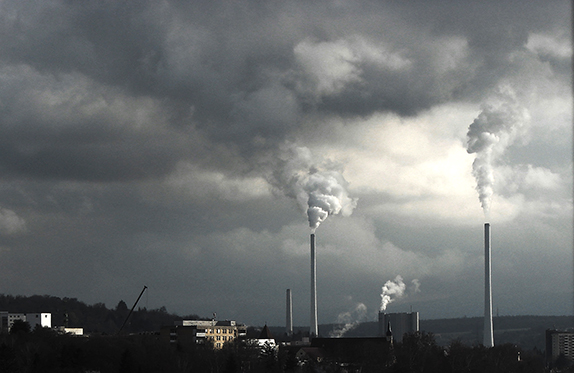
Go outside. Get some air. This used to be something mothers routinely urged our children to do. Most adults who are able enjoy walking outside, enjoying nature and breathing in that clean crisp air we all need in order to survive. New Mexico, with its vast space, huge cobalt skies, and beautiful mountain trails, is an ideal place for this. Or was.
It’s not so easy to breathe fresh air today. Not anywhere. According to figures recently released by the World Health Organization (WHO), pollution killed seven million people worldwide in 2012. As unchecked industry and overuse of gasoline vehicles increases, it is fair to assume that greenhouse gasses made for an even higher death rate in 2013. These statistics translate to one out of every eight deaths being tied to dirty air. In those nations with the fastest rates of development, levels of cardiovascular and pulmonary disease have soared.
Today’s most vulnerable live in Asia. The WHO broke down its findings into two categories: indoor air pollutants accounted for 4.3 million of the 2012 deaths, while 3.7 million were attributed to outside toxicity. Many deaths were attributed to both.
China frequently makes headlines when it comes to urban pollution, and our corporate press is fond of reproducing photographs of Beijing in which the city skyline is barely visible through a dull brown soup. People walk around with masks over noses and mouths. And we seem most concerned about China’s air pollution prior to the Olympic Summer Games or some other world-class event in which our athletes and visitors may be adversely affected. At the same time as the appearance of the WHO report, the World Bank issued a study in Beijing arguing that many of China’s cities have been allowed to sprawl, in and of itself a major cause of air pollution. The study estimates that urban sprawl will cost China $300 billion a year in premature deaths, birth defects, and other health-related problems. It calls for better-planned, denser cities to help remedy this.
Meanwhile, in India, the WHO estimates that 700 million people rely on biomass fuels like agricultural waste for indoor cooking. The burning of noxious fuels—coal, wood, and animal waste—is one of the greatest threats to human health. These situations are endemic on every continent where high levels of poverty exist: Asia, Africa, Latin America, and parts of Europe and the United States. In China, the bigger culprit is coal, which supplies two-thirds of the country’s energy.
It’s easy to pretend this is a Chinese problem. Or an Indian problem. Or a problem confined any one of the world’s countries with large compact populations, endemic poverty, and where the wealthy race toward unregulated growth at the expense of their poorer citizens’ health.
But what about the United States? Can we afford to throw the first stone? Is our house not also made of glass? Right here in our own relatively clean Southwest, think about the Four Corners area, where power plant pollution has been making people sick for decades. Albuquerque, not too long ago a city known for its clean air, now often sits beneath a haze of ugly smog. Pollution and the overuse of resources is a disease here, as it is throughout much of the world. Countries such as Germany, that has made limiting its carbon dioxide emissions a real priority, are in the extreme minority.
According to 2010 data collected for the United Nations by the United States’ own Department of Energy Carbon Dioxide Information Analysis Center (CDIAC), China accounts for 26.43% of world emissions, with the US in second place at 17.33%. Note that these are countries with very different political systems, but neither seems serious about addressing the problem. Russia has only 5.55%, Japan 3.73%, and Germany—because of its concrete efforts to move to sustainable energy—2.38%.
Canada does even better at 1.59%. Mexico accounts for 1.42%. These are all large industrialized countries. When we continue down the list to those countries that account for less than 1% of the problem, all are small and relatively underdeveloped. But there are some surprises. Struggling Cuba emits 0.12% of the world’s greenhouse gasses. Uruguay, a country that has made 100% sustainable energy a priority goal and impressively has stayed on track in the implementation of that goal, emits only 0.02%.
Go outside. Breathe if you can. Unless we—all of us—begin regulating greenhouse gas emissions and balancing development against available resources, sooner than we think we may be living in a version of Marge Piercy’s novel He, She and It. Written more than 20 years ago, it was prophetic: the owner class enjoys life within large bubbles, while the service classes and poor are forced to inhale air that kills.
(Photo by Isengardt)



Responses to “Get some air”